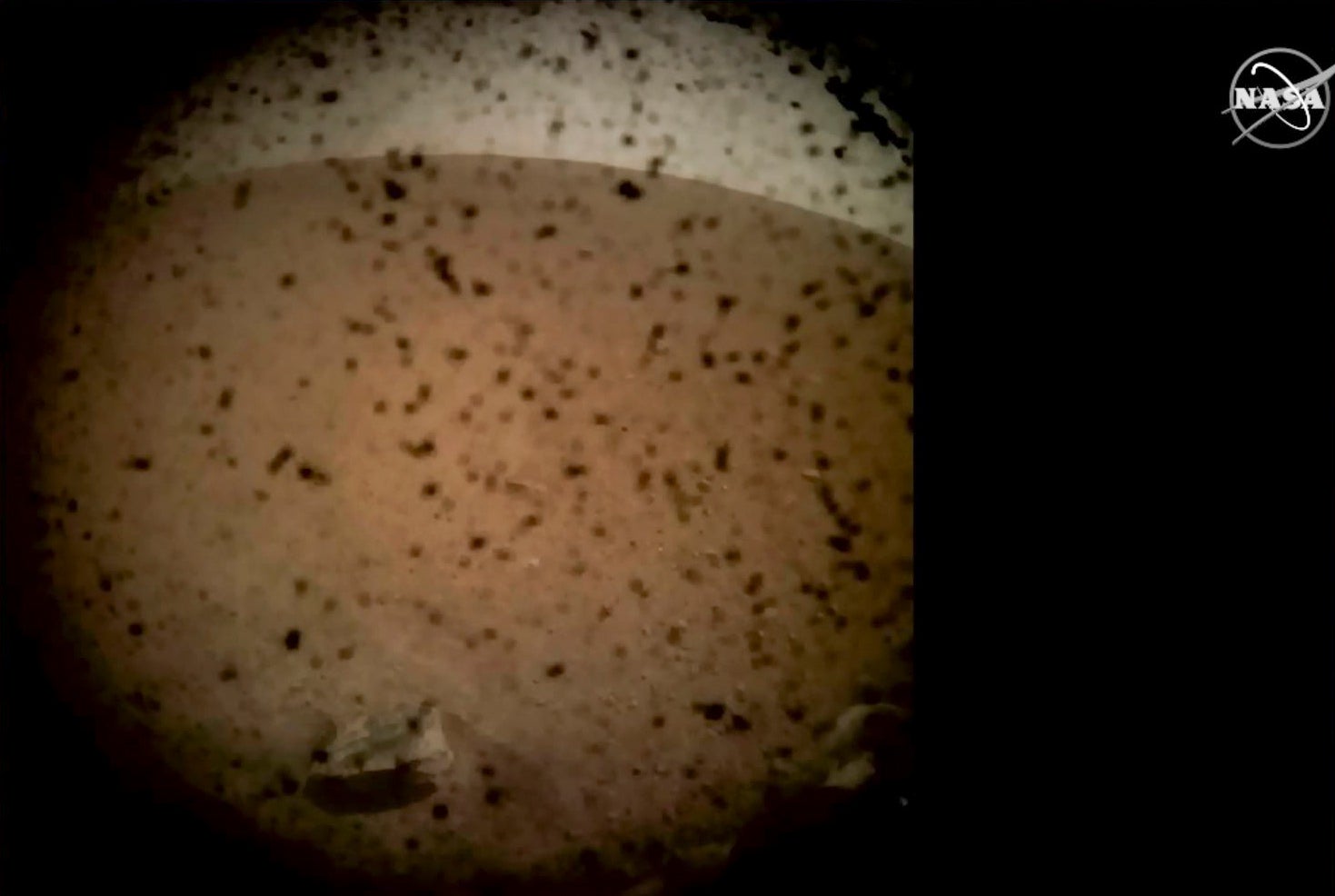Nasa InSight Mars lander successfully touches down on surface of red planet
'Wow! This never gets old'
Your support helps us to tell the story
From reproductive rights to climate change to Big Tech, The Independent is on the ground when the story is developing. Whether it's investigating the financials of Elon Musk's pro-Trump PAC or producing our latest documentary, 'The A Word', which shines a light on the American women fighting for reproductive rights, we know how important it is to parse out the facts from the messaging.
At such a critical moment in US history, we need reporters on the ground. Your donation allows us to keep sending journalists to speak to both sides of the story.
The Independent is trusted by Americans across the entire political spectrum. And unlike many other quality news outlets, we choose not to lock Americans out of our reporting and analysis with paywalls. We believe quality journalism should be available to everyone, paid for by those who can afford it.
Your support makes all the difference.Nasa has successfully landed on Mars.
The InSight lander survived the journey – and the “seven minutes of terror” that came as it slammed through the Martian atmosphere to the red planet – and managed to touch down successfully on its surface. Now it will bury beneath that surface, looking to understand the red planet’s interior.
A Mars landing is among the most perilous operations in spaceflight: humans have tried to touchdown on the red planet’s surface 17 times, and failed 10 times. That meant that engineers were incredibly nervous going into the latest landing, hoping that the spacecraft managed to negotiate Mars’s difficult and thin atmosphere.
But the landing was almost perfect, with both the lander and the satellites that communicated back with Earth working as hoped.
After it separated from the capsule that had carried it to Mars, InSight dropped into a 77-mile fall that was slowed as it smashed into the atmosphere, before opening a huge parachute and rockets that slowed its descent. It went from more than 12,000mph to a gentle landing in just under seven minutes.
It landed in what appeared to be perfect form in the middle of a vast, barren area called the Elusium Planitia, near to other Nasa rovers. Initial data and photographs sent back from the surface suggested that it had landed flat and unimpeded by rocks or other problems.
“What a relief,” said JPL’s chief engineer, Rob Manning. “This is really fantastic.” He added: “Wow! This never gets old.”
Nasa engineers at mission control in California’s Jet Propulsion Laboratory broke out into cheers and applause as two satellites that had been following InSight reported that the lander had touched down without incident.
“This is what we really hoped and imagined in our mind’s eye,” said Mr Manning. “Sometimes things work out in your favour.”
It is the first time that Nasa has landed on Mars since the Curiosity rover arrived in 2012.
The tricky journey onto Mars was watched over by two tiny satellites that travelled up on the same rocket and detached as they came closer to Mars. Those briefcase-sized spacecraft took messages from the InSight lander and sent them back to Earth, meaning that engineers could see everything happen almost in real time.
As soon as it had arrived, InSight sent back a photograph taken with a camera mounted on the front of the lander. Once it has recovered from its difficult journey, InSight will get to delving deep into the Martian surface for the first time ever.

The lander will drill down under the ground and attempt to take Mars’s vital signs. It will look for heat signals, to understand the temperature deep in the interior of the red planet; it will watch for vibrations, helping to understand how that core might be composed; and it will watch for how it is tilting, and to understand how that happens.
It will do so using a range of different equipment, including a seismometer and drill that will dig beneath the surface in a way never attempted before. The kit has been made by a team comprising engineers from across the globe, with Germany in charge of the “mole” that will dig down into Mars’s interior, for instance, and France looking after the sensor itself.
With all of the new scientific data, scientists hope they can learn more about how the Martian atmosphere formed, and what it might be made up of on the inside. In turn, that should help shed light on the other rocky planets in our solar system – including our own Earth.
Subscribe to Independent Premium to bookmark this article
Want to bookmark your favourite articles and stories to read or reference later? Start your Independent Premium subscription today.

Join our commenting forum
Join thought-provoking conversations, follow other Independent readers and see their replies
Comments